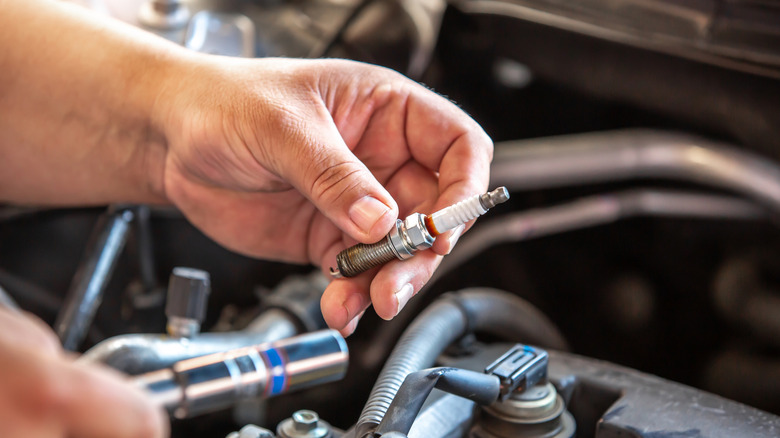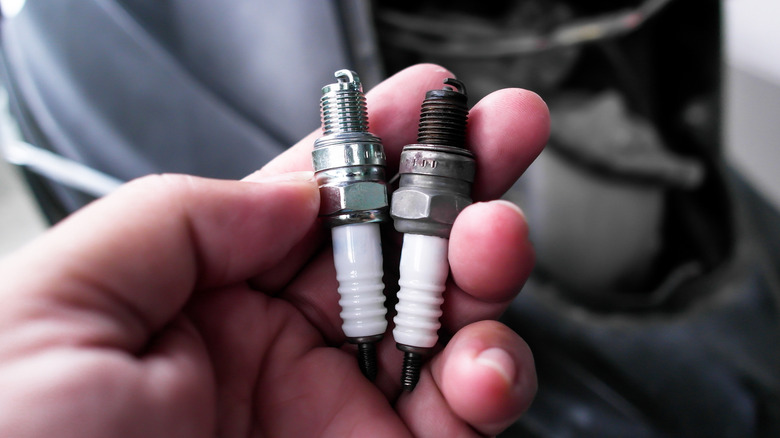Can Your Car's Old Spark Plugs Be Cleaned And Reused?
Spark plugs are an essential part of a car's ignition system. As the name suggests, they provide a spark of electricity that ignites the fuel and air mixture, and gets the engine up and running. Knowing how often to change the spark plugs is part of regular car maintenance, and for most drivers out there, the rule of thumb is to simply replace them with a set of brand new ones once they reach the end of their service life. What if you could actually clean them and reuse them?
Although technically possible, it's a temporary solution at best. Spark plugs wear over time due to carbon and oil buildup on both the inside and the outside, and with a modern engine, it simply isn't worth the risk. Installing partially worn-out spark plugs can cause misfires, bad fuel economy, or rough idling. Ultimately, while you can clean and reuse old spark plugs, they will never perform as well as brand new ones, and because of that, OEMs, repair centers, and spark plug suppliers do not recommend it.
How to clean spark plugs
To clean spark plugs and reinstall them, they first need to be taken out of the engine. Having the right tools for removing spark plugs is essential, while also making sure the engine is at ambient temperature with the battery disconnected. Locate the spark plugs, and remove the ignition coil or cable from the plug. A spark plug socket should be used to remove the plug from the engine, with a ratchet or torque wrench turning the socket steadily until the plug comes free. This process should then be repeated for all of the remaining plugs. Once all of them are free, it's time to start cleaning.
There are a few different methods for cleaning a spark plug, but the most common ones include using a blowtorch to burn off the contaminants from the plug, using sandpaper or a wire brush to sand off the contaminants, or using a dedicated spark plug cleaner. Once the spark plug's firing tip is clean, make sure to check the gap between the plug and the electrode since deviations from the manufacturer's specifications can cause misfires and many other problems.
It's also a good idea to gently clean the plug's threads with a wire brush or compressed air to get rid of carbon deposits around the plug. Before installing the plug back into the engine, always make sure the plug is dry and lightly greased on the threads to prevent corrosion.
When you should replace spark plugs instead of cleaning them
The logic behind cleaning a spark plug depends largely on the design of the plug and its condition. Mazda, Honda, and Mitsubishi warn against cleaning iridium-tipped spark plugs with wire brushes, because it might actually cause damage to the electrodes instead of cleaning them. According to service literature by Bosch, sooted spark plugs should not be cleaned or reinstalled, but replaced directly. Moreover, if you find corrosion on the spark plug's threads or tip, the plug must be replaced.
On top of that, if the plug is cracked, damaged, has a severely burned or greenish electrode, or is heavily carbon-fouled, it should be replaced. For modern engines with turbochargers, coil-on-plug ignition, and direct injection, it's always better to replace spark plugs, since cleaned spark plugs can do you more harm than good. Lastly, there are many symptoms of a bad spark plug to look out for while driving, many of which can answer this question for you.


